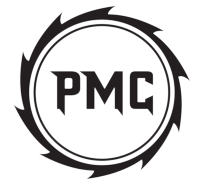Understanding Residential Electrical Wiring – lowa
Working from home (WFH) has grown more popular in recent years and shows no signs of letting up. Fast internet speeds make a distributed workforce a reality for many companies and many industries, and many workers prefer it to the daily commute. Working from home makes a proper home office a necessity, though, rather than just a bonus sometime in the future. If you’re a WFH pro, does your home wiring support your needs? Let’s look at both newer and older homes and help you evaluate what you have and what you need.
Residential Wiring in Newer Homes
Newer homes, in general, are going to be easy to adapt to a modern home office because of the way they’re wired. Most people who need to upgrade their home’s wiring have enough amperage (overall current) running into their home; they often just need more outlets and better lighting. These are usually simple modifications, and many homeowners are capable of doing this work. However, no matter who does the work it must follow the electrical code. Electrical work is the last place for work that’s “close enough.” It’s not hyperbole to state that buildings can burn from improper electrical modifications.
Homes built within the last few decades will often have a 200-amp service specified by the electrical code. That’s plenty for normal use, unless you have a woodshop with heavy-duty tools, for example, that draw a lot of current. More common, though, is the need for more standard outlets to accommodate multiple computers, printers, scanners, and the like. It’s tempting and common practice to use extension cords and power strips, but that’s a bit sloppy and not always safe. Much better is to make a permanent installation of two new outlets, for example, where none or only one existed before.
If your wall has only one outlet and you need another or two more, you simply pull power from the existing outlet and install new electrical boxes and outlets in the wall just where you need them. The challenge is getting the electrical wire from an existing outlet or switch to the new electrical box. The new wire must usually pass through the wall framing (studs, plates, and blocking) to reach the new boxes.
This process requires cutting holes in the sheetrock or plaster, drilling holes in the framing, and pulling wire to the new boxes. It’s not complex, but there’s a knack to getting the wire to go where you need it. Sometimes a larger hole is needed for access, requiring sheetrock repair.
A newer and popular option, especially in home offices, is wall outlets with USB ports built in. They provide a clean look and you no longer need the USB adapters. They install just like a standard outlet.
If your room needs more lighting, you can opt for floor and desk lamps plugged into wall outlets, or install ceiling boxes and pull wire to them. This works like pulling wire in the walls, but sometimes you can access the basement, crawlspace, or attic and get power from existing wiring. If you haven’t done this work successfully before, it’s best to an electrician.
Residential Wiring in Older Homes
Older homes present a host of challenges and usually are not good candidates for DIY work. Too many things can go awry, such as when attempting to adapt prior modifications that were not done properly or using older hardware such as knob and tube systems. All components must be inspected by a professional to determine if they can continue to be used.
Another common issue is grounding. Many older homes have wiring that is not properly grounded. When you open up a switch or an outlet, you might see only two wires, a white wire and a black wire. Without a proper ground wire, you need some expertise to ensure that this outlet is safe. Plus, there are many other factors to consider. For example, is the existing main panel capable of handling any upgrades if you want to add a circuit or two, or add new appliances?
You’ll also need to check the wire gauge, or thickness, in your home before attempting any modifications. Different circuits require different gauges of wire, and each breaker, outlet, and switch on a circuit must match the gauge of the wire.
Most of the time it’s best to scrap all the old stuff and start with new materials. The risks are just not worth the minimal cost to get the work done properly and to code by a professional. Plus, electronics such as televisions and computers and other home-office equipment can be sensitive to power surges and voltage drops. Sometimes those devices can be ruined.
The only safe option is to have a licensed electrician evaluate and advise on your household electrical wiring. Call Mr. Electric at (844) 866-1367 or click to submit a service request. We’ll send over a licensed electrician who can solve your electrical problems safely and economically. You’ll find more information about home office upgrades
